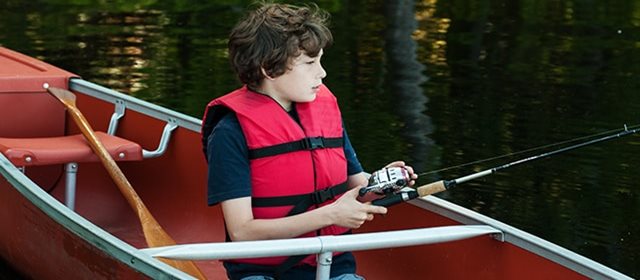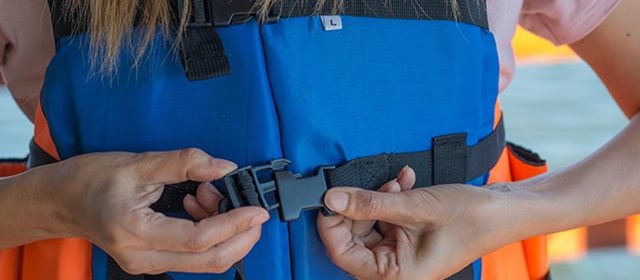Canoe fishing is a simple, affordable way to take fishing adventures to the water. Follow these canoeing tips so your fishing trips are safe and enjoyable.
If you’re looking to take your fishing away from the shore, canoe fishing is a great place to start. Canoes make for good fishing vessels because they are relatively inexpensive, can travel through weedy waters and offer a stealthy mode of transportation. But before you grab your gear and jump into a canoe, take a look at this quick guide to canoe fishing for beginners.
Find the Right Canoe

Even if you are already familiar with the basics of canoeing, fishing in a canoe requires more consideration than a casual day in the canoe. It’s likely you’ll need to move within the canoe more often when fishing, so finding a canoe that can handle extra motion is key. Look for a mid-width canoe, or one that is 12-15 feet long and about two feet wide. You might also want to consider the makeup of the canoe; one made using lightweight materials such as fiberglass or aluminum can make maneuvering and porting easier.
Outfit Your Canoe for Fishing
Once you have a canoe, there are a few things you should do to make it fishing-ready. Attaching and mounting an anchor will allow you to fish one area longer. As an anchor alternative, you can attach a rope to an eyelet on your canoe, make a loop on the opposite end and use that to secure the canoe to a sturdy rock or branch. Attaching rod holders to your canoe can help reduce clutter on the canoe’s floor and allows you to drag a line while the canoe is in motion. Since canoe floors tend to get wet, investing in dry bags to keep important items from getting soaked is a good idea. You’ll also want to use rope to secure items while not in use. Fishing tools that get used often, such as pliers, should be secured at each end of the canoe to avoid extra movement.
Use Canoe Fishing Techniques
Traveling to hard-to-reach fishing spots is sometimes easier in a canoe than it is on a larger fishing boat. Take advantage of this by getting closer to the places where fish are likely to bite, such as streams or areas with thick vegetation. For the best results, focus on casting toward the outer edge of weedy locations and avoid fast-moving currents. If you are fishing over clear, shallow water, cast farther away from the boat. In these conditions, fish near the canoe tend to spook easily. When traveling to a new location, use enough momentum in your strokes to allow yourself to glide into your fishing hot-spot without the added noise of paddles hitting water.
Follow Canoeing Safety Precautions

Just with any boating and fishing experience, you need to wear a properly fitted life jacket while canoe fishing. The buddy rule applies to canoe fishing, as well. Fishing with a friend allows you to keep your position in the canoe, which will limit movement, and it also lets you share paddling duties. Since even the sturdiest of canoes can feel “tippy” on the water, you might consider setting up your fishing rods before getting onto the boat. This approach might be especially helpful if you’re fishing with kids. Only traveling with the necessities will also limit the motion on your canoe, making it safer for everyone on board. Just make sure sun protection is part of your essentials list!
By following these beginner tips for canoe fishing, your experience on the water will be safer and more enjoyable. Have fun out there!
This post is part of a series of sponsored content with Sierra Trading Post.









